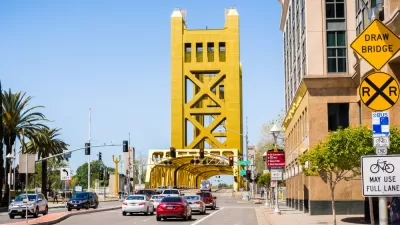An argument for the value of including planners in industries far beyond city planning.

In a piece in The Handbuilt City, Nat M. Zorach argues that companies of all kinds could benefit from hiring urban planners. “More companies, especially public utilities and any firm dealing with infrastructure of any kind, should hire city planners on their staff. It’s a huge value-add,” Zorach writes.
“The core of my pitch is that city planners understand interrelated, complex technical and non-technical systems, in a way that the average professional does not.” As Zorach explains, “Cities, like corporations, are not islands, nor are they oases. They operate in a complex regulatory environment, much like a corporation does, dealing with municipal regulations as well as state and federal law. Similar to how corporations can raise funding through everything ranging from IPOs to crowdfunding to promotion sales, cities also source capital from different places– like use fees, taxation districts, federal grants, state grants.” Planners can bring together diverse skills and help devise solutions that more siloed professionals may not think of.
Lastly, “Planners might not always be the best communicators, but even the worst communicators in planning generally understand how to connect with the general public better than the average corporate sector player. This is valuable in building consensus, obtaining buy-in, or facilitating broad collaboration.” Experience with community outreach and public meetings can go a long way in the corporate world, which is largely disconnected from the average consumer and citizen.
FULL STORY: Blueprint for Value: Why Companies Need City Planners on Their Payroll

Manufactured Crisis: Losing the Nation’s Largest Source of Unsubsidized Affordable Housing
Manufactured housing communities have long been an affordable housing option for millions of people living in the U.S., but that affordability is disappearing rapidly. How did we get here?

Americans May Be Stuck — But Why?
Americans are moving a lot less than they once did, and that is a problem. While Yoni Applebaum, in his highly-publicized article Stuck, gets the reasons badly wrong, it's still important to ask: why are we moving so much less than before?

Using Old Oil and Gas Wells for Green Energy Storage
Penn State researchers have found that repurposing abandoned oil and gas wells for geothermal-assisted compressed-air energy storage can boost efficiency, reduce environmental risks, and support clean energy and job transitions.

Updating LA’s Tree Rules Could Bring More Shade to Underserved Neighborhoods
A new USC study finds that relaxing Los Angeles’ outdated tree planting guidelines could significantly expand urban tree canopy and reduce shade disparities in lower-income neighborhoods, though infrastructure investments are also needed.

California's Canal Solar Projects Aim to Conserve Resources and Expand Clean Energy
California’s Project Nexus has begun generating electricity from solar panels installed over irrigation canals, with researchers and state agencies exploring statewide expansion to conserve water and boost clean energy production.

HHS Staff Cuts Gut Energy Assistance Program
The full staff of a federal program that distributes heating and cooling assistance for low-income families was laid off, jeopardizing the program’s operations.
Urban Design for Planners 1: Software Tools
This six-course series explores essential urban design concepts using open source software and equips planners with the tools they need to participate fully in the urban design process.
Planning for Universal Design
Learn the tools for implementing Universal Design in planning regulations.
Heyer Gruel & Associates PA
City of Moreno Valley
Institute for Housing and Urban Development Studies (IHS)
City of Grandview
Harvard GSD Executive Education
Salt Lake City
NYU Wagner Graduate School of Public Service
City of Cambridge, Maryland





























